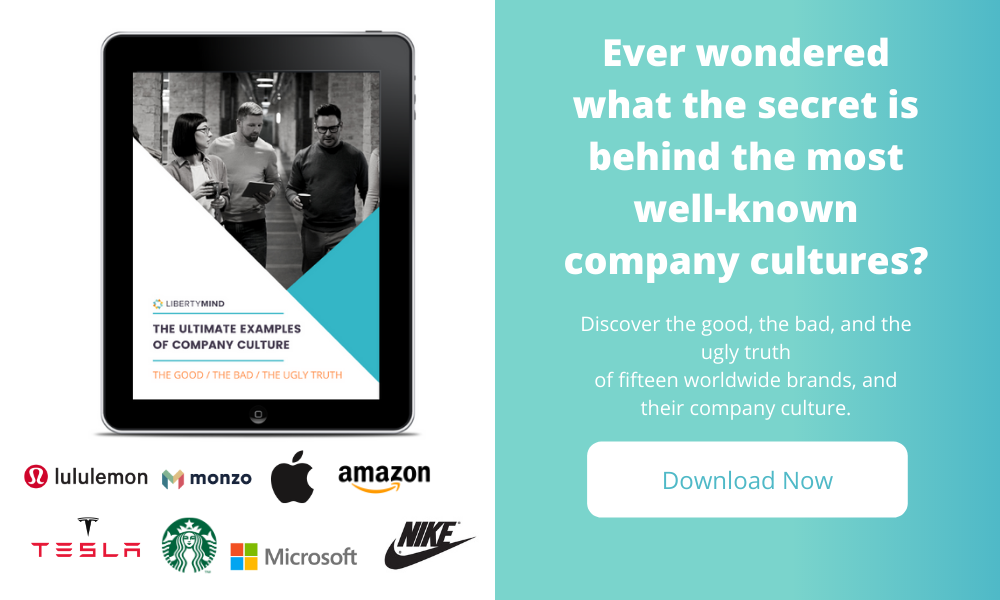How Microsoft's Company Culture Got a Reboot
You’ll be hard-pressed to find a person that hasn’t heard of Microsoft. Millions of individuals as well as corporations use the products and services of Microsoft to perform their daily operations. Nearing its 50 years of existence, Microsoft has reached tremendous levels of success which didn’t come without its challenges.
Going back in history
The multinational computer technology corporation was co-founded by childhood friends Bill gates and Paul G Allen in 1975. The name is derived from the words
microcomputer and software. They converted a mainframe computer programming language, BASIC – to develop software for the Altair 8800, an early personal computer. Which led to tremendous levels of success.
By the early 1990s, Microsoft had already sold more than 100 million copies of their operating system software, defeating rival operating systems such as CP/M, which it displaced in the early 1980s, and later IBM OS/2.
The growth of Microsoft is commendable, reaching $1 million in revenue by 1978. While all the focus might be on financial growth, how did the company culture play a role in a multi-million dollar corporation?

Increasing revenue doesn’t mean your culture is perfect
Maybe the success that Microsoft reached in such a quick time can be attributed to the boom of everybody wanting and needing a personal computer in the 90s.
The unrivalled success at the time might have made them think that there was nothing they needed to change to improve their culture and structures but what is referred to as the Lost Decade of Microsoft – as a result of a change in management, tells a different story…
In December 2000 Microsoft had a market capitalization of $510 billion, making it the world’s most valuable company. By June, it was number 3, with a market capitalization of $249 billion.
Looking at Apple during the same time of December 2000, they had had a market capitalization of $4.8 billion and didn’t even make the list. By June, Apple was Number 1 in the world with a cap of $541 billion.
In a matter of 6 months, we witnessed a jaw-dropping reversal of success. But how could a company so successful have stumbled so quickly in a technology race it was clearly winning?
The answer is simple.
No matter how successful your business is, every organisation needs to keep focussed on their purpose.
Known as being at the front of innovation, a lean competition machine, led by young visionaries and giving competitors a run for their money, Microsoft suddenly became bloated and bureaucracy-laden.
The dawn of the millennium brought on a major culture shift at Microsoft that ultimately influenced the company’s ability to stay at the forefront of innovation and drive its bottom line.
The hallways at Microsoft were no longer home to the geeky barefoot programmers in Hawaiian shirts working toward a common goal of excellence; instead, the new corporate structure meant that life behind the scenes at Microsoft had become serious and brutish. Fiefdoms had taken their place in the internal structure and mastery of politics emerged as the key to career success.

Microsoft loses focus of what is important
There was a new focus on revenue over innovation under the management of Steve Ballmer. Perhaps stemming from his history in sales, Ballmer took a culture that was based on technology, innovation and excellence and reimagined it to solely focus on revenue. The mindset change meant that employees were now focusing on proving how their product was increasing revenue instead of how their product was improving the lives of its customers.
Inevitably, this caused a lot of internal competition between co-workers, resulting in strained relationships and less collaboration between teams.
A contributor to the failure of Microsoft’s culture was “stack ranking”. This is a practice where managers rank their employees on their performance. Employees at the bottom would often be placed under performance review or replaced.
This system had corrosive effects on employees by encouraging workers to play office politics at the expense of focusing on creative, substantive work.
Instead of encouraging collaboration, a lot of brilliant employees did everything they could to avoid working alongside other top-notch developers, out of fear that they would be hurt in the rankings.
This created a behaviour of people doing whatever they could to preserve their rankings, even if it meant sabotaging each other’s work to stay ahead of the game. This completely shifted the focus from creating a technology software with innovation at the centre to doing what you can to look good in the organisation. People focused on short-term goals for performance reviews rather than long terms goals for innovation which stifled their creativity and motivation.
Financially, Microsoft had a fair amount of success with Ballmer as CEO, but the same can’t be said for the company culture. Ballmer emphasized competition and defence at the cost of collaboration in the company, creating a period of dullness in the company.
After 14 years of leadership, Steve Ballmer handed over the reins to Satya Nadella, who is believed to be the best thing to happen to Microsoft since the departure of Bill Gates.
Why was Nadella a good choice?
Nadella came into Microsoft with a new vision and mindset. He created and emphasised a culture that focused on supplying customers with products that they wanted and needed instead of creating Windows products that were projected to have the highest profit potential.
The cultural change has improved how all the talented people at Microsoft now focus their energy – going from internal competition to collaboration and from performance-focused reviews to innovation.
Before Nadella, there wasn’t a culture of trust in Microsoft. Users didn’t feel connected to the products and therefore they were not eager to buy them.
The Microsoft culture transformation focused on making current and potential customers feel that the company cared about their success. Products were created with the user in mind, to solve their problems and not only drive Microsoft’s revenue.

What does modern-day Microsoft look like?
Modern-day Microsoft finds its values and culture rooted in its employees and customers. The new culture, encourages learning, trying and even failing. Which has made employees excited about developing themselves and enthusiastic about learning things outside of their comfort zone.
Nadella has redefined its culture and along with it the growth of the company. Microsoft is now adapting a growth and learning mindset in its culture and is taking it to new heights. As a result, 8 years into his leadership, the company has grown from just over $800 Billion to over $2 trillion.
Now, when you look up the culture of Microsoft, it is clearly defined on the website. Ultimately, Microsoft wants to make difference in the world and they recognise that this is not possible without their employees and customers.
What is important to Microsoft?
Growth Mindset
CEO Satya Nadella has emphasised the importance of learning and growth in many different interviews. At Microsoft, they are fostering the teaching that everyone can grow and develop when their potential is nurtured.
This is a fundamental mindset for the technology-driven company to have. Technology is constantly evolving and changing and for a company to stay at the forefront, you need to learn new things and be prepared to take risks to achieve your goals.
The Customer
Microsoft has put their customers at the centre of everything they do. By implementing a customer feedback system, they get first-hand data that narrates their user’s experiences with their products and services.
By doing this, their users ultimately become a part of the Microsoft team and they’re able to continue to delight users by providing solutions that they know is needed.
Diversity & Inclusivity
By embracing diversity, the company is able to see solutions through the eyes of people from various backgrounds and cultures. This allows them to better serve their customers with solutions that are inclusive irrespective of race or gender.
To adapt not only to changing technology but also the changing way of business, Microsoft has had to say goodbye to a lot of stale employees’ business practices to ensure that their employees feel aligned and committed to the goals of Microsoft.
A Unified Microsoft
Microsoft now encourages unity and collaboration amongst its employees to achieve the best possible outcomes. Employees don’t work in silos and compete against each other, instead, a team spirit is created to ensure everyone comes together as one.
To strengthen relations and enable collaboration, employees have access to annual company retreats and Hackathons where innovation and creativity are encouraged to embrace the power of teamwork.
Lessons from Microsoft’s Company Culture
Instead of a focus on the bottom line of business, an organisation needs to focus on its employees and customers. If employees aren’t motivated and working together to innovate solutions for your customers, you won’t achieve your business goals.
A leader has a crucial role in the success of a company’s product and services but they need to recognise the importance of their team. Without a team that is engaged and working toward a common goal, you won’t find success. Teams need to be highly involved and collaborative to keep developing and innovating new products and services that serve your audience.
Customers should always be your number one priority. Instead of making the mistake of creating products that customers don’t want, by listening to them and validating their concerns and problems, you can create products that they need. As a result, you’ll win their trust and loyalty – boosting the success and reputation of your business.









